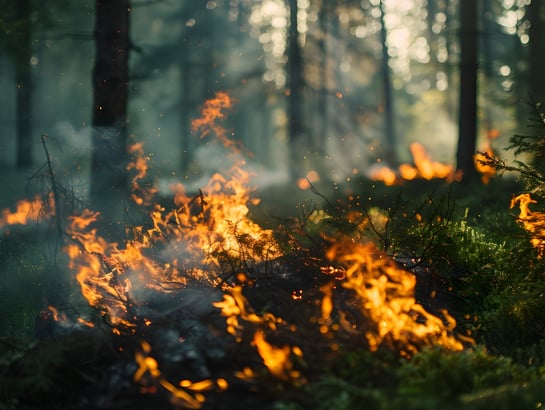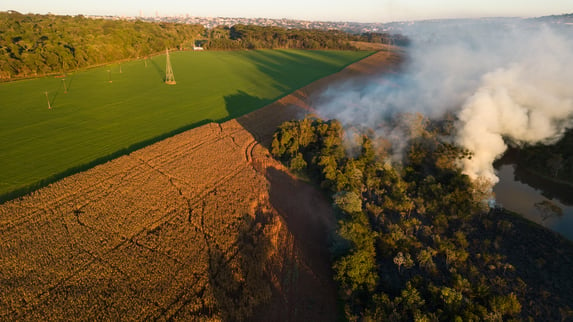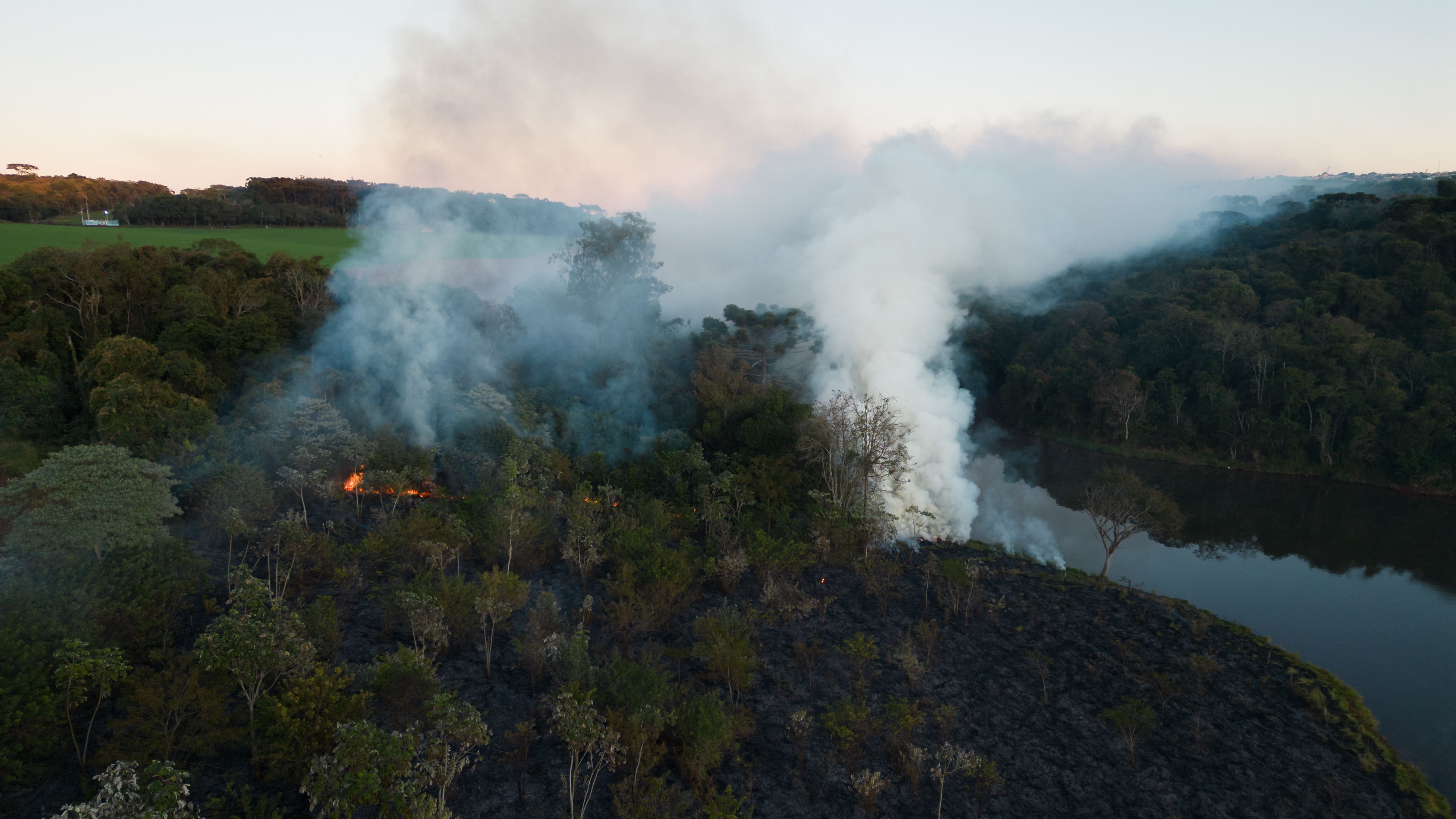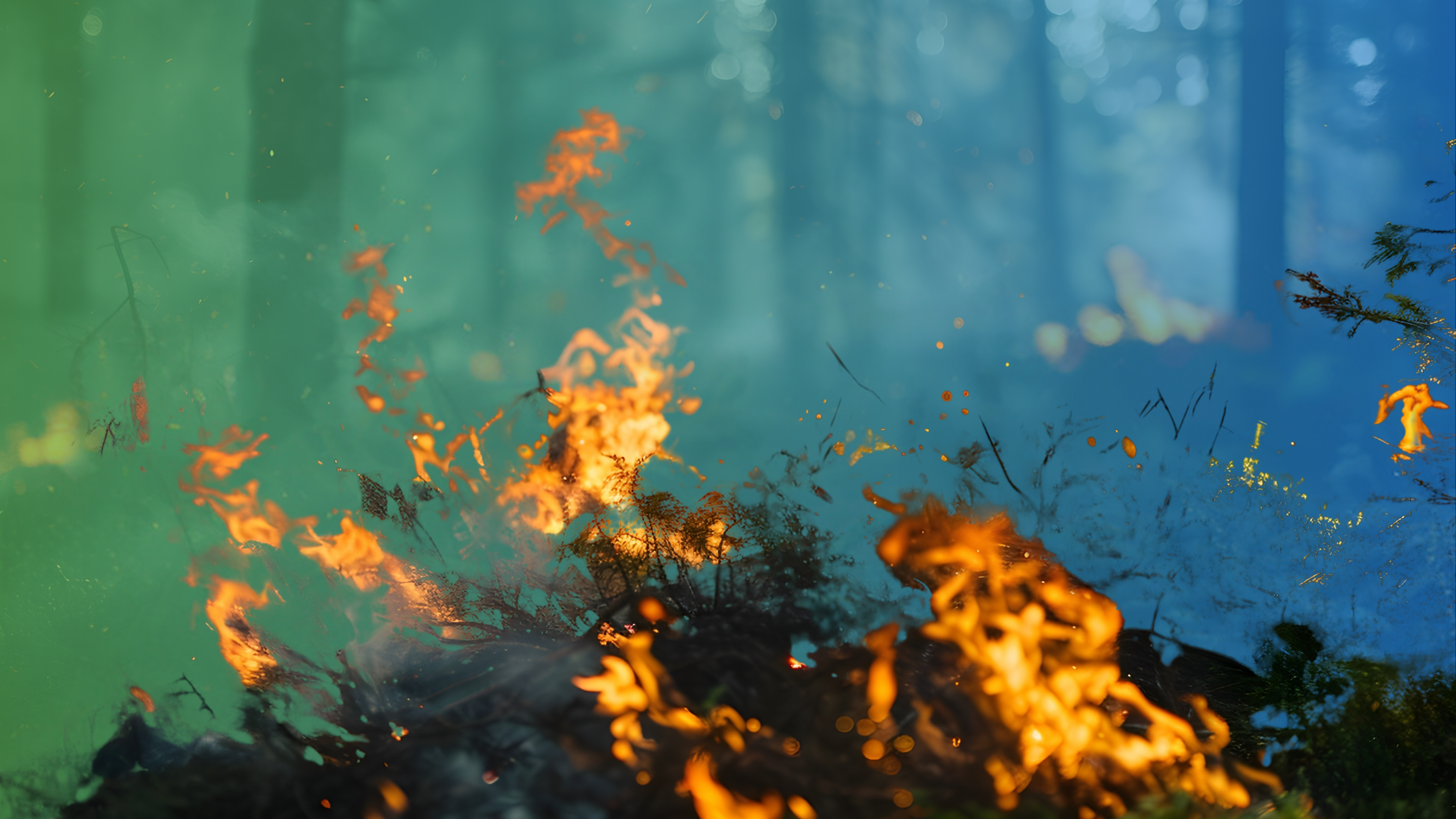Out of the many natural disasters impacting humans in today’s world, wildfires are gaining the most steam.
In certain parts of the world, wildfires have long been an annual issue. However, the geographic range in which wildfires have the power to have a negative impact on the day-to-day lives of people continues to grow. It’s not just the areas vulnerable to wildfires that need to be concerned; many areas can be indirectly impacted by wildfires in other parts of the world. Naturally, summer is the worst time for wildfires, so it’s a good idea to better understand how wildfires work and what people should know about them.

Basics of Wildfire Season
The first thing to know about wildfire season is that it has no pre-determined start and finish the way hurricane season does. It simply begins when there is a large uncontrolled fire and ends when all wildfires have been controlled. However, it typically takes place during the summer and fall months throughout the Western U.S., often beginning in June.
Most years, wildfire season lasts at least five months, although it’s been known to last for over seven months some years. In recent years, wildfire season has tended to be closer to seven months than five months, especially since the number of fires and burn areas continue to increase. Wildfire season also tends to be starting sooner as the effects of global climate change start to become more apparent.
How Do Wildfires Start?
Wildfires need fuel, heat, and oxygen in order to spark and grow. Wooded areas tend to be the most obvious type of fuel. However, fabric, paper, and even oil can also serve as fuel for wildfires. Likewise, the heat of the sun also plays a role in helping wildfires to start and grow. But a bolt of lightning can also provide that heat, as can unnatural sources like a lit cigarette. As for oxygen, most fires need at least 16% oxygen in order to burn. Since Earth’s atmosphere is around 21% oxygen, that’s more than enough to spark a fire.
The fuel the fire is using reacts with the oxygen around it while it burns, releasing heat and generating smoke. Given the need for fuel, heat, and oxygen, arid climates and areas experiencing droughts are most vulnerable to wildfires because dry vegetation or dead plants become ideal fuel sources. Of course, pine trees and other types of evergreens contain flammable oils, allowing them to burn easily if a wildfire comes close.
Human Impact
As mentioned, there are natural causes of wildfires such as droughts and lightning strikes that help to provide a spark or add fuel to an existing fire, allowing it to grow quickly. However, the U.S. Department of Agriculture also reports that 85% of the wildfires in the U.S. have been influenced by humans. This is due to cigarettes that aren’t put out properly, campfires that aren’t put out, burning debris, power lines that have been knocked down, or acts of arson that grow to become out of control.
There is also the theory that human-caused climate change has created conditions that allow wildfires to thrive. Increased carbon dioxide emissions from humans have led to higher temperatures, leading to more droughts, which creates more fuel and combustion sources for wildfires.
Ecosystems Need Wildfires
Despite the fact that there is often a human element in wildfires, they do occur naturally because ecosystems need them. When forests and grasslands become too crowded, it’s hard for new plants to grow and thrive. This is when a wildfire can be beneficial for an ecosystem because it helps to clear away dead plants and makes the soil, allowing new life to blossom. This is part of the reason why lightning strikes can serve as the spark for a naturally occurring and useful wildfire.
In a lot of ways, wildfires bring balance to ecosystems and are a part of what makes them healthy and balanced. However, the increased volume of wildfires is a concern because most of them aren’t occurring naturally. In some cases, they are destroying ecological areas that don’t need to be cleared to make room for new plants. Likewise, more wildfires increase the likelihood of a wildfire going beyond a forested area and threatening to destroy residential or commercial areas, which is obviously the worst consequence of a wildfire.

How Fast Do Wildfires Spread?
As long as there is fuel, heat, and oxygen, wildfires are able to spark and spread. As it starts to spread, a wildfire in a forest can move as fast as six miles per hour, which doesn’t seem fast but can actually devour a significant portion of the forest in just one day. Meanwhile, in a grassland, a wildfire can move up to 14 miles per hour, engulfing even more land in a small amount of time. Of course, wildfires also require strong winds to move at these types of speeds. However, if there is fuel, heat, oxygen, and wind, wildfires can spread quickly.
Ramifications
As mentioned, wildfires can have a positive impact on the environment if they occur naturally and don’t grow too large or out of control. But if wildfires are sparked or fueled by unnatural resources, there can be serious ramifications.
Obviously, wildfires have the ability to threaten residential and commercial buildings, driving people from their homes and forcing businesses to abandon workspaces. This can threaten the safety and well-being of employees who are trying to do their jobs while also potentially trapping people in their homes or workplaces if they don’t evacuate in time. Obviously, this can cause business operations to stop, creating disruptions in the supply chain, if not eradicating businesses and homes.
At the same time, pollutants like smoke and ash are sent into the air while wildfires burn. This can have a serious impact on the air quality, not just in the vicinity of the fire itself but potentially hundreds of miles away depending on the wind. Therefore, a wildfire can end up having an impact on residents and businesses hundreds of miles away because their day-to-day routines can be disrupted if air quality becomes poor enough that people can’t be outside for extended periods of time.

Protecting Businesses
During the summer, businesses need to be aware that wildfires are possible. Even if a business isn’t near a forested area or in a region traditionally vulnerable to wildfires, it’s still a good idea to be prepared and know how to protect the business infrastructure and employees. It starts with simply staying informed. Business leaders can monitor the news for wildfires or reports of air quality concerns. If anything note-worthy is in the news, that information should be shared with employees so that they’re not caught off guard.
It’s also a good idea for businesses to take a proactive approach just in case a wildfire approaches or the effects of a fire can be felt. This includes having N95 or N99 masks available for employees, especially those who work outside. These masks will be needed if air quality becomes poor. Businesses should also consider performing routine inspections and maintenance on indoor HVAC systems and having air filters to ensure air quality inside.
To prevent wildfires from approaching the physical structure of a business, remove anything that could be considered fuel for the fire. This can be as simple as cleaning gutters and roofs while removing any dead leaves or wood from the perimeter of the building. Encouraging nearby businesses to do the same is also going to help keep a sire from getting too close.
Businesses may also want to make contingency plans in case wildfires approach the workplace or air quality forces people to remain inside. Is remote work going to be an option for certain employees? If so, create a set of guidelines for how that will work. If remote work isn’t possible, determine at what point will it be unsafe for employees to come to work because of the threat of wildfires or the air quality.
Finally, practice an evacuation drill so that employees know what they need to do in case they need to leave the workplace as quickly as possible because wildfires are getting closer. If a wildfire gets too close, employees need to get out quickly and find a safe place. Obviously, the safety of people inside the building is the top priority. But it’s also important to save important documents and stay in touch with customers if a wildfire gets too close and normal business operations are interrupted.
Preventing Wild Fires
Of course, when wildfire season arrives, it’s up to everyone to do their part to prevent them. Wildfires will never be eliminated altogether, but reducing the number of wildfires that are directly started by human activity will help to keep people safe. This starts with the proper management of campfires and bonfires. These should never be left unattended without being completely extinguished. The same applies to rubbish burns, which should only be done in areas where it’s been deemed safe and legal to burn trash.
Likewise, people need to be careful when smoking outdoors or using fireworks. These are two of the most common causes of wildfires that can be prevented. Cigarette butts should be put out in water, not in areas where potential wildfire fuel can be found.
As for fireworks, they should be left to professionals who know how to douse used fireworks so that don’t ignite a wildfire by accident. It’s also necessary to avoid fireworks on windy nights and without a hose or fire extinguisher to keep any vegetation around the fireworks wet before, during, and after lighting them off. These are simple steps that can help prevent wildfires from igniting and wreaking havoc on individuals and businesses.

